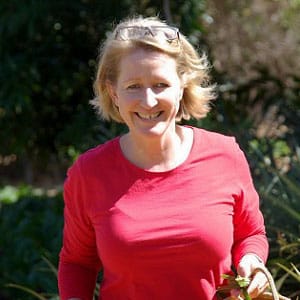Recently I read an article on the importance of “eating responsibly,” which led me to consider the full extent of what this means. Knowing where your food comes from, I believe, is a good start; being conscious of how it is raised or produced is even better. When you buy fresh produce from a grocery store, do you ever consider where and how the vegetables and fruits were grown? Have you knowledge of the chemicals used to produce them? Have you counted the air or truck miles used to carry these products to you? No, is often the simple answer. When we walk into a grocery store, usually on the fly, we grab whatever we need without thought of how these so-called fresh ingredients impact our health, let alone the health of the planet.
When you grow your own fresh produce, or buy from someone in your community who follows best practice methods, you are not only caring for yourself but you are also caring for those who farm or garden around you. To have grown a thriving regenerative organic garden, deep in a semi-arid Kalahari woodland in the upper Zambezi Valley in southern Zambia, is to me one of my most satisfying achievements.
Soon after I arrived on my husband Chris’s farm in early 2013, I began researching the best way to grow a garden organically, which he quickly warned me off because, in Chris’s words, “you are setting yourself up for failure with all the myriad pests and insects, the nematode-ridden Kalahari sand, and our extreme climate.” My inflexibility in creating anything other than a regenerative organic garden induced our first real row: the scientific commercial farmer versus the pantheistic gardener. I prevailed and today exhibit a certain smugness that I did. This garden has shown me the miracle of plants and insect life; how they know how to self-regulate and flourish with minimal interference of man. Eating responsibly has illustrated a boundless energy cycle that circles from the soil to the seed to the flower to the fruit to the food we eat daily, which provides me and my loved ones with wholesome, colourful, healthy, fresh ingredients 365 days a year.
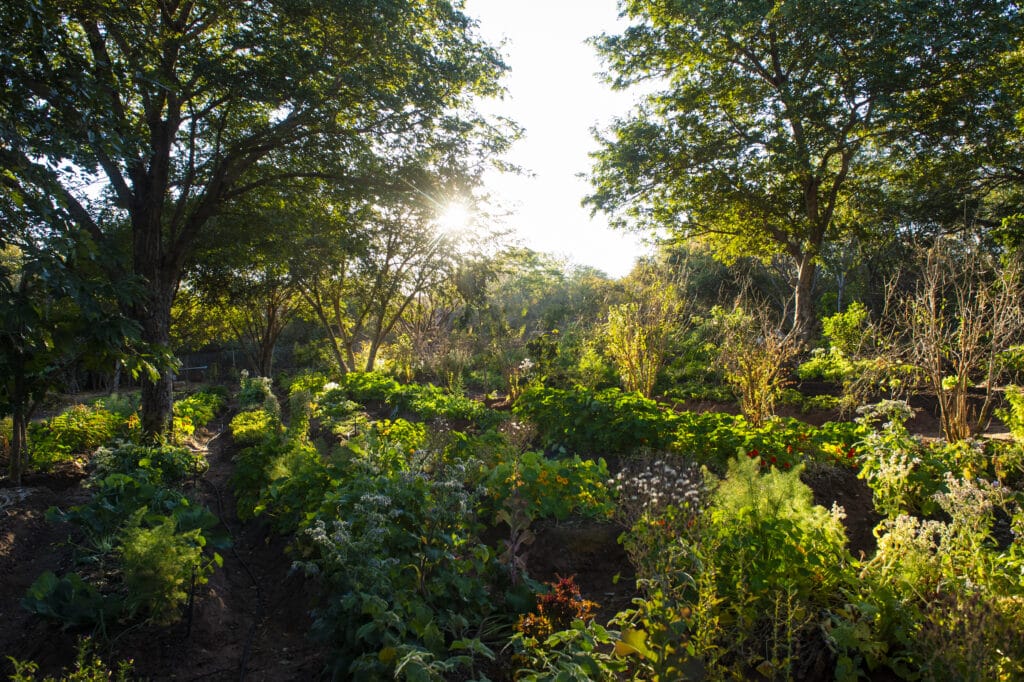
The Kalahari woodlands that surround us are filled with wild edibles that are both inimitable in flavor and super-healthy. Through the years I have exchanged knowledge among the Zambians with whom I work, and while I have taught them how to grow and cook fresh ingredients in a contemporary way, they have taught me everything about Zambia’s wild and indigenous food. I buy dried heritage grains and beans from neighbouring villages and native markets, and my meat, fish and dairy from local producers in and around Livingstone, the closest town to where I live.
Eating responsibly ensures we all benefit from a supply chain that keeps the money circling among one another. Purchasing wild and indigenous food is not only a way to include sustainable, flavorful ingredients into a menu, it also uplifts and supports myriad people, in particular women, in the community. Guided by my staff, many of whom are connected to these villages and markets, I began to substitute expensive imported foodstuffs with local ingredients at a fraction of the price.
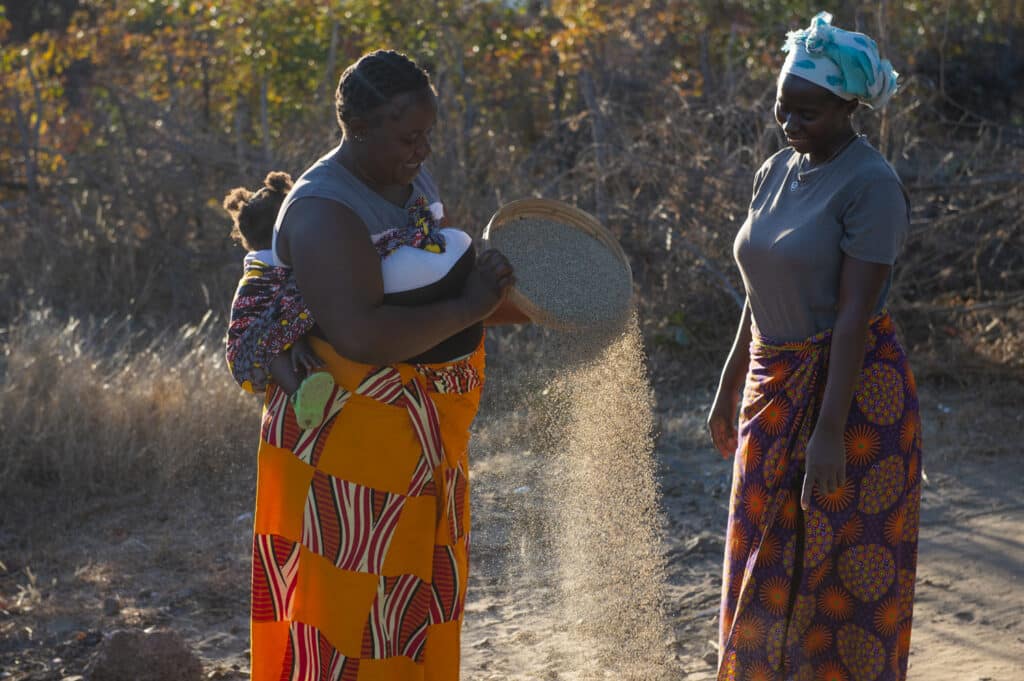
Instead of quinoa or couscous, I use millet or sorghum of which there are many varieties, an added bonus being they are gluten-free. Instead of chickpeas, I use mbwiila beans, a kind-of native equivalent to black-eyed peas, which are sold in all the markets of Livingstone. Mbwiila is a nitrogen- fixing legume that thrives in semi-arid soil. Its Latin name is Vigna subterranea, and it originates from West Africa. Mbwiila is the name given to the legume by the Tonga people, the dominant tribe of Zambia’s Southern Province. Mbwiila pods underground, like a peanut. Mbwiila can be eaten fresh, but in the Livingstone markets they are mainly sold as dry beans, which are later soaked in water, skinned, and then boiled into a kind of porridge. I use them to make a killer hummus.
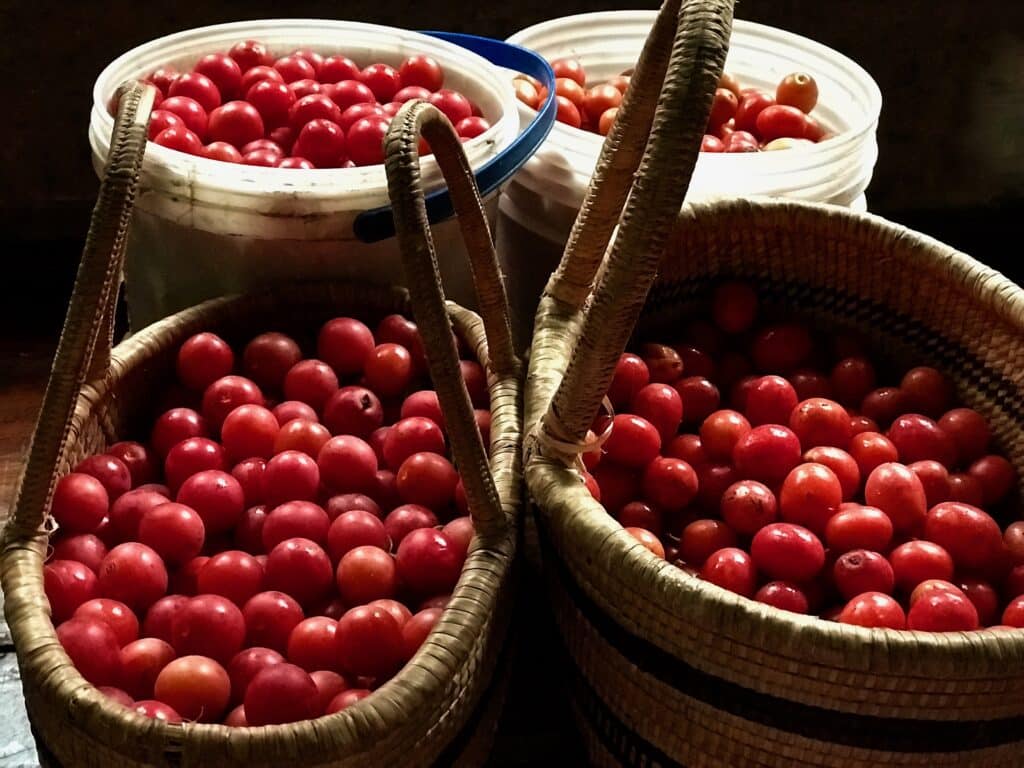
Instead of prunes and raisins, I use dried wild fruit like masawa and nsumo, the fruit of the false wild medlar, which grow in our woodlands and are also available in native markets during the season. I have two wild masawa trees flourishing in my garden that not only supply us with crates of fruit, but are magnets to pollinators and predator insects. Eaten raw, the grape-sized, lime-green orange masawa hints of apple; boiled down into a purée, it IS apple (I cannot grow apples here because it is too hot). I also dry masawa to add to our baked goods and Bush Gourmet Muesli, as well as turn it into jellies and fermented drinks. Nsumo fruit when dried are very similar to prunes. It is a key ingredient in my Bush Biscotti and Wild Panfortes. In season, we eat fresh nsumo in our fruit salads, and while its distinctive taste is probably closest to a plum, it is rare in that it has lots of flesh, uncommon among the wild fruit growing among the understory of our woodlands. Most have seeds so large, working with them in the kitchen is often a real challenge.
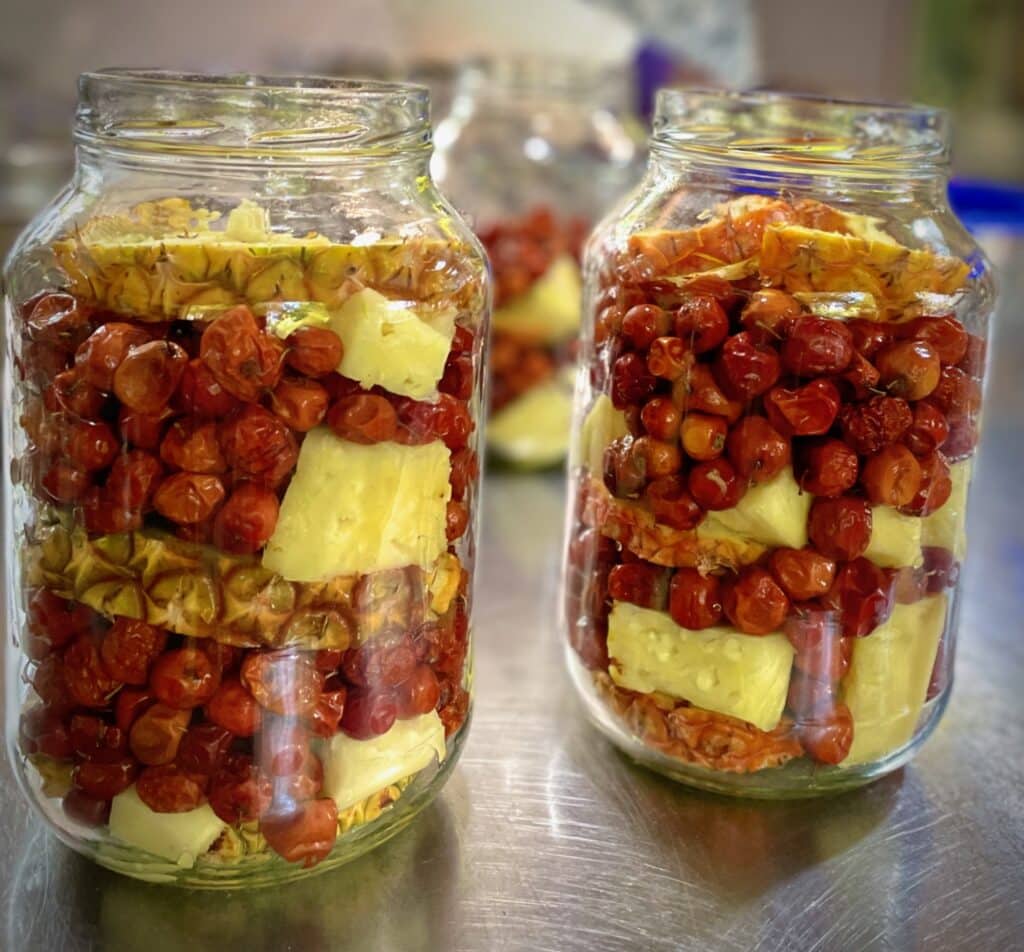
I ferment sindambi (wild hibiscus), mungomba, (wild sourplum), musika (tamarind), and muchingachinga (northern dwaba berry) into tepache and vinegar. And I sometimes combine them with organic fruits and roots, like strawberries, pomegranates, ginger and turmeric, grown in my garden. I turn all these (mostly bright red) wild fruits into jellies, jams, glazes, ice cream and liqueurs, while the dried powder of the baobab fruit adds a je ne sais quoi to baked goods and drinks. Contained in a velvet-skinned pod the size of a lady’s clutch bag, powder-dusted baobab seeds are held together like pieces of a puzzle in a netting of coral pink fibre. Its fragrant powder has the texture of sherbet and is tart, like a lemon. The fat-filled wild mongongo nuts are not only terrific for feeding vegans as they make rich mayonnaises and sauces, they are a great substitute for overpriced imported nuts. Our house is constructed beneath the enormous crown of a mongongo tree. Its fruits crash down on to our tin roof every May, like an offering from Mars, the God of War, reminding us (loudly) of the bounty this woodland, if nurtured, will always provide.
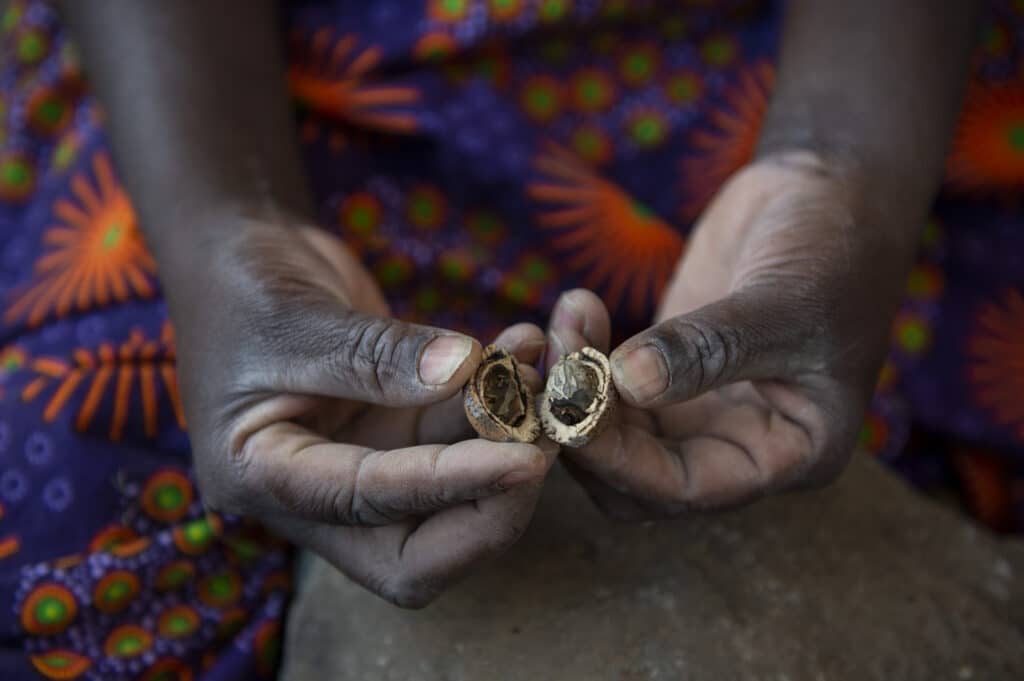
Being creative with hyperlocal foodstuffs has positively impacted the confidence of the Zambians I train in my kitchen, for they know these ingredients innately; they are at ease cooking what they would have been taught to prepare at home. Eating responsibly has led me to connection, to quality, to wellness, and to a satisfaction of knowing that those around me are also being uplifted. It has led to my delighted immersion in the wonders of the natural world, and it has led me to a desire to tread lightly atop our intricate and fragile earth upon which we are guests for such a short time.![]()

